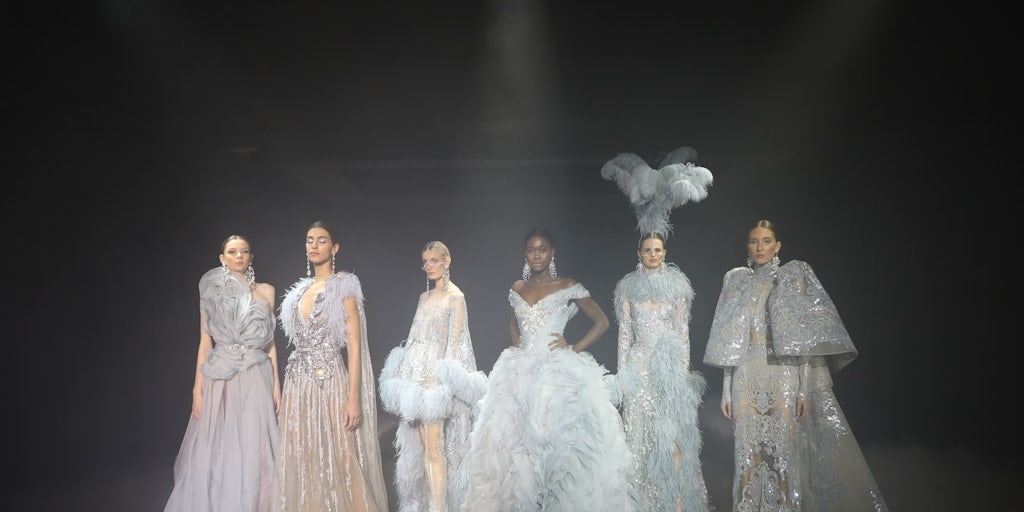Fashion Career Specializations – A Breakdown
Coming straight from fashion school, you might be thinking that as a fashion designer; you’ll have the opportunity to work with all types of clothing. What you may not know is that generally, the fashion industry is split into categories, and then categories within categories. Basically, the fashion industry is very specialized. The breakdown begins with price (which usually corresponds with quality). The lowest classification is Discount, and at the height of fashion is Haute Couture:
- Discount: These stores sell merchandise that retails at a discounted price from what other stores charge. Outlet malls or stores like Ross, Wal-Mart, Target, or Conway are example of discount retailers that sell discount labels.
- Budget / Mass Market: Knock-offs of higher priced designer items that are sold at low competitive prices to the masses. Old Navy, Forever 21, and Charlotte Russe are a few popular budget labels. Department stores in this category include JC Penney, and Kohls. This market usually retails for less than $100.
- Moderate: These include nationally advertised apparel brands such as Nine West, Gap, Abercrombie & Fitch, Express, and Zara are all in the moderate range. Examples of moderate department stores are Macy’s and Dillards. These brands typically retail for less than $300.
- Contemporary: More than just a specific price point, this classification is a fashion-forward image often aimed at women in their ’20s and early ’30s looking for trendy fashions priced more affordably than Designer pieces. BCBG, Betsey Johnson, Bebe, and Rebecca Taylor fall into the Contemporary category, which usually retails for under $500.
- Better: Also selling for less than $500, these collections use better quality fabric and styling than lower-priced brands. Armani Exchange, Jones New York and Anne Klein are two examples of a better-priced line.
- Bridge: Priced under $1000, these lines serve as a “bridge” between better and designer categories. And includes
names like Ellen Tracy, Dana Buchman, DKNY, Emporio Armani, and Lauren by Ralph Lauren. - Designer: True designer collections typically sell for more than $1000 per item. The fabrics, fit, details, and trims are superior to other ready-to-wear items. Some examples of designer labels are Gucci, Prada, Versace, Armani, and Chanel.
- Haute Couture/ Avant-garde: Also know as couture, these terms have been commonly misused by ready-to-wear brands. Haute Couture, or simply “couture” designers sell custom, made-to-measure pieces cost tens of thousands of dollars and are affordable only to a select few. Technically speaking, there are only ten official Haute Couture Houses including: Christian Dior, Jean Paul Gaultier, Chanel, and Givenchy. Avant-garde designers produce high quality, one-of-a-kind garments that experiment with new design concepts and push the envelope of popular fashion.
Even within the categories listed above, each market is broken down into more specific specializations. First, design companies are broken down by customer: men’s, women’s, children’s etc. Then are further divided by type of clothing: sportswear, evening wear (special occasion), sleepwear etc. And then design teams are designated to specific areas like Wovens, Knits, Sweaters, Tops, Bottoms, Dresses, Outerwear and so on.
On an unfortunate note, it is very difficult to move from one category to another. If you start building your career with mass-market companies, you’ll face some barriers when you apply for that dream job at Ralph Lauren. The same goes for designer specialties. If you’re experienced working with children’s woven tops, chances are you won’t land a position designing women’s dresses. If you’re absolutely determined on making a switch, you’re best bet is to start from the bottom in your desired field and work your way up again.
Something else to consider is the different types of manufacturers and retailers out there. Some manufacturers design and produce their own designs, which are then sold to retailers. These manufacturers don’t have their own retail stores. Examples include Shoshanna, Jones New York and Carmen Marc Valvo. There are also manufacturers that own licenses for a variety of brands. For example, Warnaco holds licenses for Calvin Klein, Speedo, and Chaps; while Phillips Van Heusen (PVH) owns licenses for BCBG, Sean Jean, and Kenneth Cole.
Then, there are retailers that only sell merchandise purchased from manufacturers. These include stores like Bloomingdales and Neiman Marcus. Many manufacturers also have their own retail locations such as Polo Ralph Lauren, Armani Exchange and Nicole Miller. Other retail stores have their own product development teams and have merchandise manufactured specifically for their private label such as Gap, Old Navy, and Express. In addition to purchasing merchandise from outside manufacturers, many department stores also have their own private label collections. Examples are: I.N.C. (Macy’s), and Arizona Jeans (JC Penney).
The largest employment opportunities out there lie with mass-market companies, which often pay pretty well to start, however these figures usually level-off after a few years of experience. The higher end markets pay less to start, and work hours are longer, but the prestige you’ll receive from such reputable companies will do wonders for your resume!
Source by Natalie Nizhny



:quality(70):focal(1604x689:1614x699)/cloudfront-eu-central-1.images.arcpublishing.com/businessoffashion/TSMXXL635RHAJLG6Q7QX7TEG4U.png)
